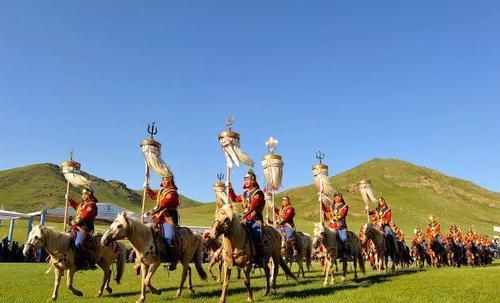
The world says that the Manchu Qing completely eliminated the nomadic tribes in the north, but this is not true. Yes, because it was indeed a nomadic border problem that was solved during the Qing Dynasty; no, it was because it was not solved by the Manchus themselves, and there were other people who helped, that is, Tsarist Russia.
After the predecessor of Tsarist Russia, the Principality of Moscow, became strong, it gradually got rid of the control of the Mongols, and began to annex the various khanates established by the Mongols, gradually annexing the Crimean Khanate, the Kishan Khanate, etc. From the 16th century, Tsarist Russia began to march into Siberia, and the Siberian Khanate has since become a historical term. The power of the Russians began to penetrate deeper into the Far East, and from then on the peoples on the Mongolian plateau completely lost the space for strategic maneuver.
As far back as the Tang and Han dynasties, the Central Plains Dynasty could not be described as powerful, often beating these powerful enemies in the north and running away, but only to this extent. No matter how badly these peoples on horseback were defeated, every once in a while, they would roar south in droves, bringing one slaughter after another to the Central Plains Dynasty.
Why can't this problem be solved? In fact, the reason is very simple, before the Russian occupation of Siberia, the entire Siberia and even the vast area of Central Asia is the back garden of these nomadic peoples, defeated in the south of the desert, then flee to the north of the desert, if the Central Plains Dynasty pursues the north of the desert, then go north or west, the army of the Central Plains Dynasty can not always be chased. Not to mention that the environment of the Mongolian plateau was too cruel for the farming peoples, which was only suitable for grazing, and no Central Plains dynasty could control it for a long time.
However, all this changed radically with the arrival of Tsarist Russia. Regions such as Central Asia and Siberia were no longer the backyard gardens of nomadic tribes, but had a new owner, the Tsar. The Mongol tribes could no longer be as far away as they had been in the Han and Tang Dynasties, because they had a strong enemy in their north, that is, Tsarist Russia.
The Dzungar Khanate was the last glory of the Mongol tribes, and then the Dzungar Khanate faced two major powers during this period, that is, Tsarist Russia and Manchu Qing. The Dzungar Khanate could no longer flee far away after defeat like their ancestors, because there was Tsarist Russia there. The Outer Mongolian tribes faced the attack of the Dzungar Khanate and had no choice but to rely on the Manchu Qing or Tsarist Russia, and this was also the reason.
The strength of the nomads lies in their erraticity, and no matter how powerful the Central Plains Dynasty is, it can only be temporarily defeated, because their strategic maneuvering space is too large, but after the Zhongyuan Dynasty and Tsarist Russia blocked their room for maneuver, the decline of the nomadic peoples was expected.